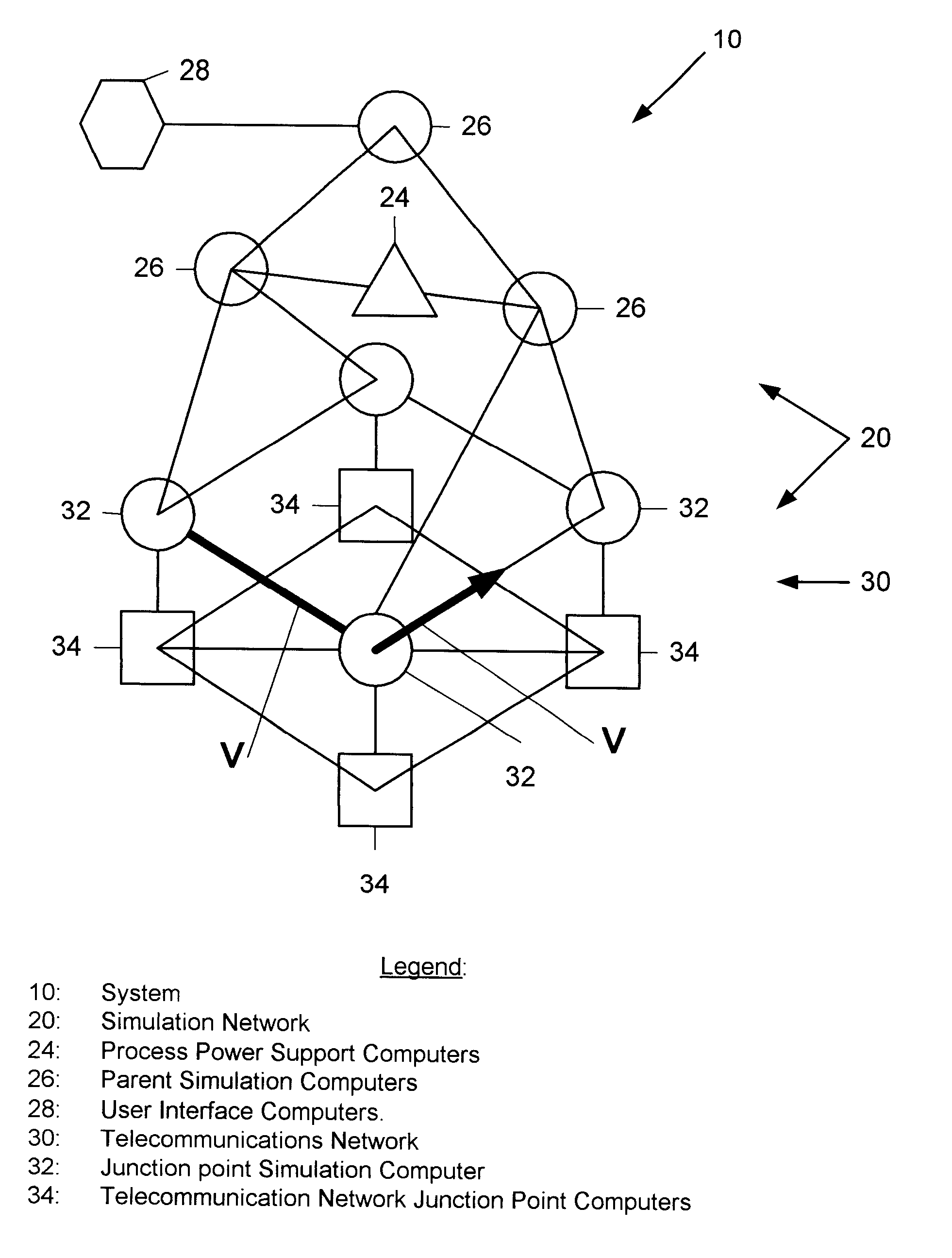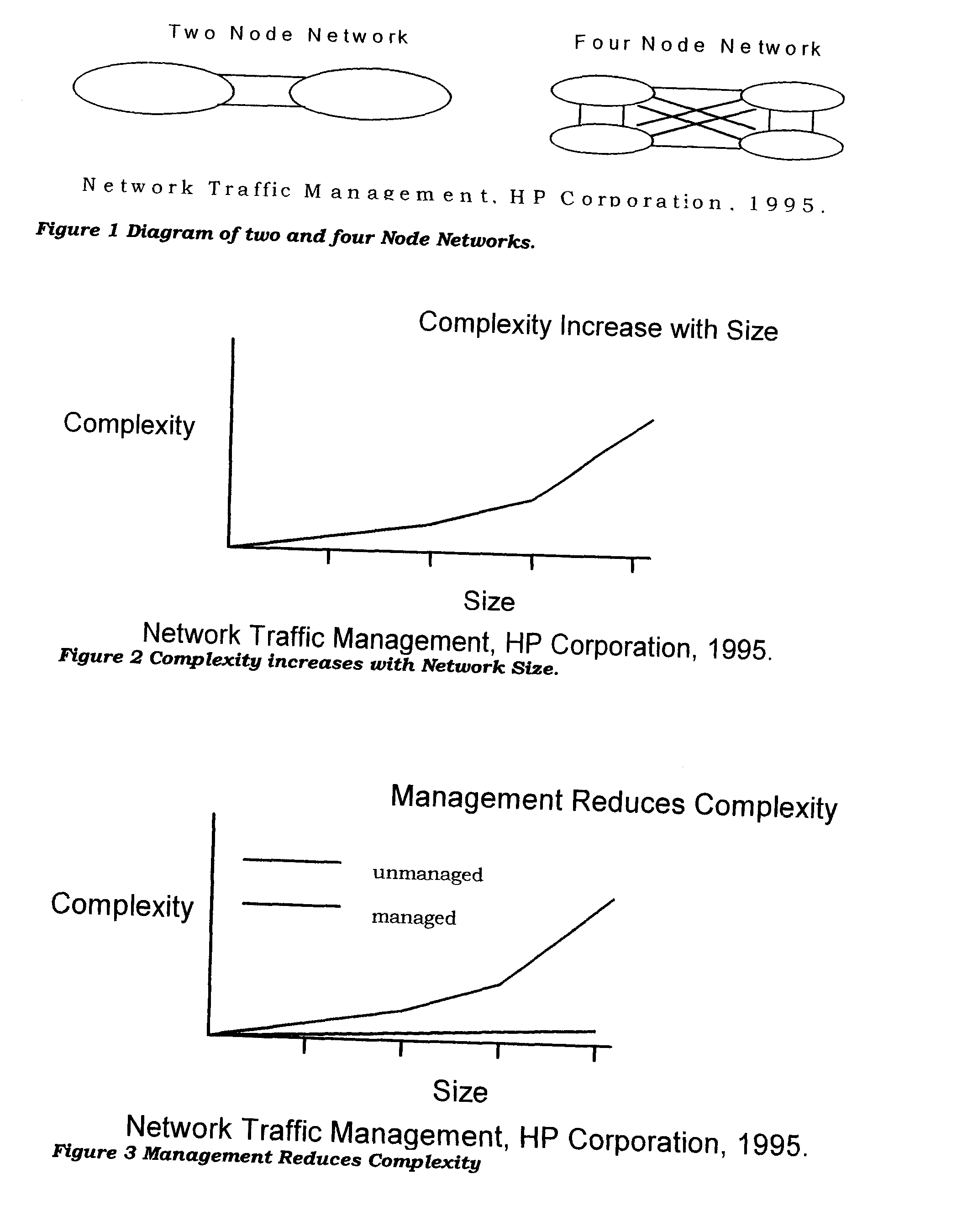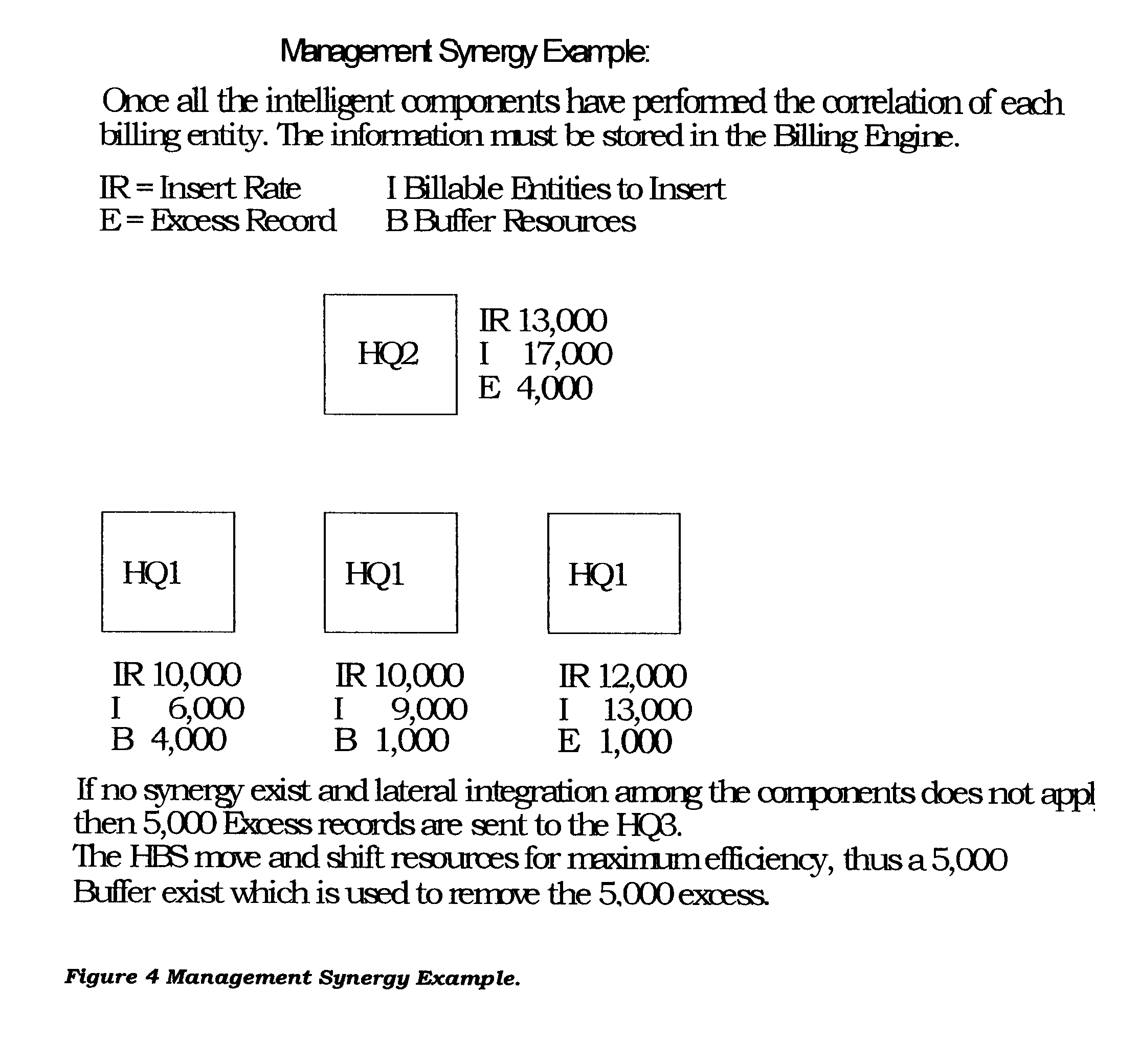Parallel computer network and method for telecommunications network simulation to route calls and continuously estimate call billing in real time
a computer network and simulation technology, applied in the field of computer networks, data accessing and processing systems, can solve the problems of complicated debiting of calling cards, bandwidth usage, and more processing power and data access capability
- Summary
- Abstract
- Description
- Claims
- Application Information
AI Technical Summary
Benefits of technology
Problems solved by technology
Method used
Image
Examples
Embodiment Construction
An example of an application of the system 10 would be in conjunction with a telecommunications network 30 spanning Florida and Georgia. Florida is divided into three LATA's and Georgia is divided into two LATA's. For calls placed from Florida, the simulation network 20 first links to parent simulation computers 26 controlling calls entering Florida, which check each of the three Florida LATA's to see if the area codes within any Florida LATA match the dialed area code. This is a first step in forward chaining. The question of whether there is a match is answered with the sending of either a "yes" or "no" information packet. If there is no match, the parent simulation computer 26 directs the call to a parent simulation computer 26 controlling call routing in Georgia. Forward chaining further determines which tandems own the call and a vector V is rapidly constructed. Then the completed information is sent through rearward chaining to the hive as a "billing entity", and also preserve...
PUM
 Login to View More
Login to View More Abstract
Description
Claims
Application Information
 Login to View More
Login to View More - R&D
- Intellectual Property
- Life Sciences
- Materials
- Tech Scout
- Unparalleled Data Quality
- Higher Quality Content
- 60% Fewer Hallucinations
Browse by: Latest US Patents, China's latest patents, Technical Efficacy Thesaurus, Application Domain, Technology Topic, Popular Technical Reports.
© 2025 PatSnap. All rights reserved.Legal|Privacy policy|Modern Slavery Act Transparency Statement|Sitemap|About US| Contact US: help@patsnap.com



